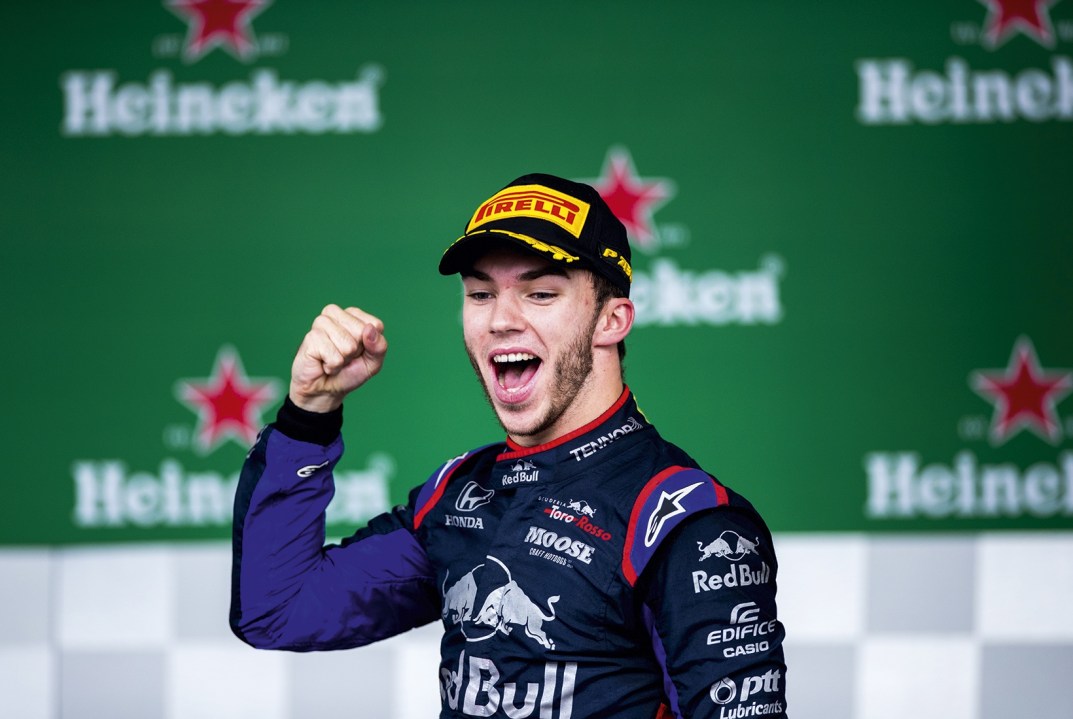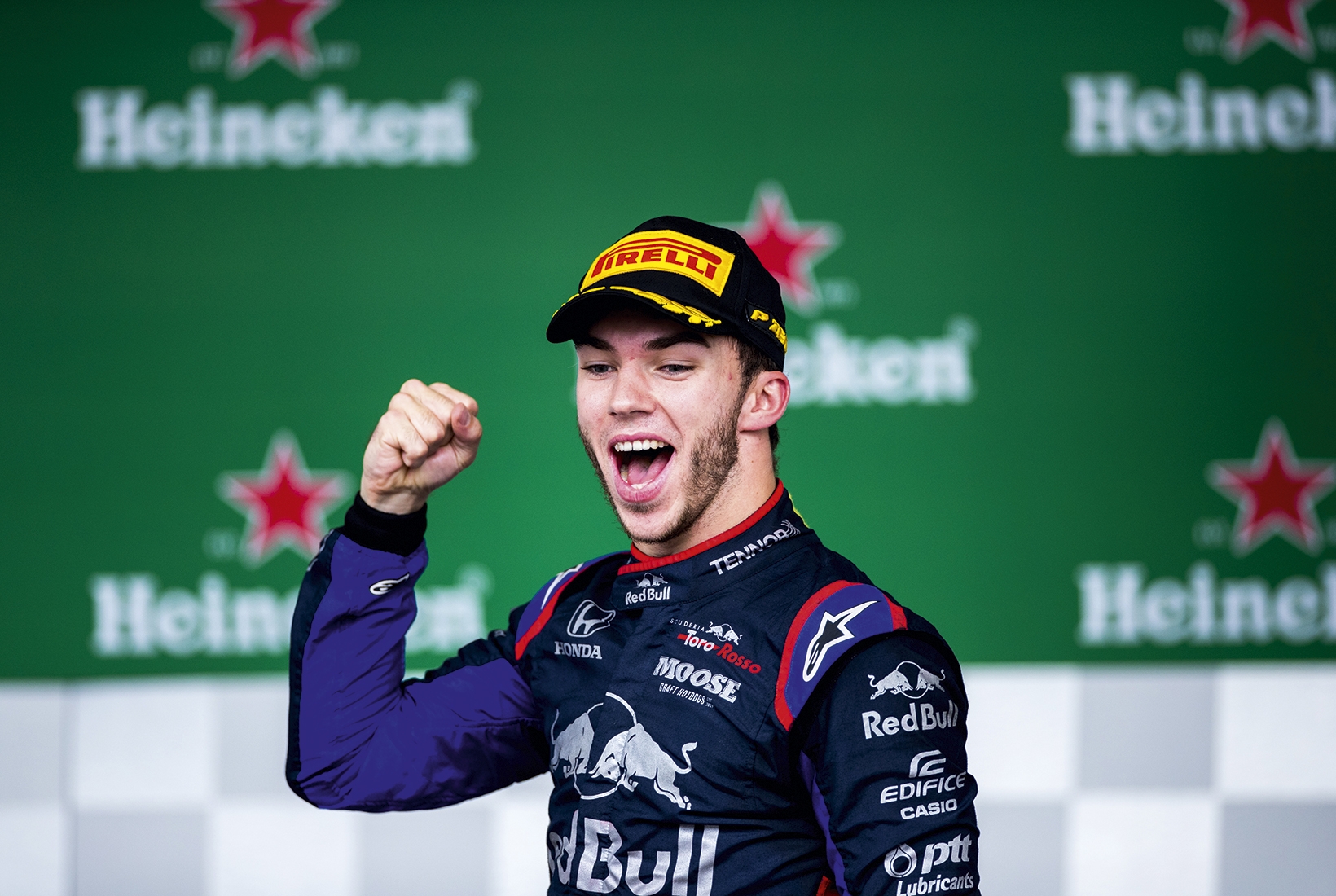Some years ago I was invited to the British Grand Prix at Silverstone courtesy of a watch manufacturer. As freebies go it was one of the best: endless champagne, overnight in a posh hotel near the track (wife invited too), then a trip by helicopter so as to avoid all the frightful traffic jams. All was going swimmingly until the actual race…
God, it was boring. Noisy too. You’re stuck in an elegant marquee with endless booze and as many gold-plated, jewel-encrusted lobsters as you can force down your gullet, but it’s impossible to relax or chat or enjoy yourself because screaming endlessly in your lughole is the ‘neeaaawwww’ noise of those stupid bloody racing cars. Occasionally you pop outside for a bit of distraction: but it’s just cars going round and round, rarely if ever overtaking one another, let alone crashing, which is what everyone secretly hopes to see. Not since Khe Sanh, I imagine, has anyone been more grateful when the chopper finally arrived to airlift them home.
It’s the backstories, the bitter team and race rivalries, that make F1 so endlessly fascinating
Yet here I am, a decade or so on, totally addicted — as is the Fawn — to Netflix’s Formula 1: Drive to Survive. The sport hasn’t fundamentally changed: still basically cars going ‘neeeaaawwww’ very fast round a circuit. But what I’ve come to realise is that the race itself is almost a minor detail. It’s the backstories, the bitter team and driver rivalries, the tyre changes in the pits, the difference a bit of rain makes, the fear and desperation and exultation and disaster that make F1 so endlessly fascinating.
Take Pierre Gasly, a sweet French boy (they’re all terribly young these drivers) whose entire life has been spent working his way up the motor-racing ladder from karting, to Formula Renault, to GP2. Now, finally, in episode five, he has won himself a coveted slot as one of the two drivers in the Red Bull team.
That’s the good news. The bad news is that his driving partner is Belgian-Dutch Max Verstappen, probably the world’s most promising F1 driver. Aged 17, at the 2015 Australian Grand Prix, he became the youngest driver ever to compete in F1 and he’s the youngest ever grand prix winner (Spain, 2016, when he was just 18). Max is totally fearless, extremely aggressive and enjoys the kill: he would have made a superb wartime fighter pilot. Poor Gasly, on the other hand, is just that bit too soppy and nice. Time and again we see him closing on a rival only to baulk at that red-hot, nerve-shredding, do or die moment when you either overtake or chicken out.
As you watch, you so want Gasly to prove himself. (You’ve met his nice parents in rural France who have sacrificed everything to get their boy where he is. And where else can he go if not F1?) And you curse the ruthlessness and impatience and terse lack of sympathy among the Red Bull management, led by cocky, conspicuously pleased with himself Christian Horner who is married to Spice Girl Geri Halliwell and who looks at Gasly as a trainer would a race horse that has pulled up one too many times.
At the same time, though, you have to concede that Horner is right: this is an expensive sport with no room for slowcoaches. Next thing you see is Gasly’s replacement Alexander Albon being photographed for promo. The snapper asks Albon to copy his predecessor’s stance: ‘We just have to shoot you in a similar pose because we’re going to remove that subject and put you in place,’ he explains.
How did they get such extraordinary access to every intimate moment? Because the series — this is season two — is produced by F1’s owner Liberty Media, which wants to transform F1 from a motorsport into an entertainment brand. As a result the pits and control centres and team HQs and driver hotels are so swarming with cameras that it all becomes quite meta — with drivers using the c-word at one another and joking that Netflix will never use that. (Which, to confound them, Netflix does.)
‘Netflix’s Drive to Survive is better than actual Formula 1,’ argues Wired magazine. And I think it’s right, not least because the sport is completely dominated by Britain’s boring but brilliant Lewis Hamilton in his beautiful, silver Mercedes-AMG. What Drive to Survive makes you realise is that the real drama isn’t with the big names at the top, but with the smaller, hungrier, more desperate teams like Haas, and the up-and-coming drivers such as Australian Daniel Ricciardo who know that if they’re not the next Hamilton, then they’ll probably go the way of Pierre Gasly. All the F1 doubters I know who’ve seen it have ended up totally hooked. You will be too, guaranteed.








Comments